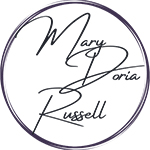I always seem to do two books in each genre. After resisting the pattern for months, I have bowed to the inevitable. DOC, which will be out in May, focuses on one half of the West’s most famous friendship, telling the story of Doc Holliday’s short and tragic life. I’m now committed to a second Western, which will center on Wyatt Earp, on what led to the gunfight at the O.K. Corral, and on the long and bitter aftermath of the bloodbath known as the Earp Vendetta.
Why did I hesitate? Easy. A dozen movies have told this story. Entire forests have been sacrificed to pulp novels and moment-by-moment histories about what happened during those 30 seconds in Tombstone, Arizona.
I always try to bring something new to hoariest subjects of the genres I tackle. Often, it’s the women in my story who bend a genre in an unexpected direction. In DOC, Kate Harony, Bessie Earp and Isabelle Wright each shine a light on their own lives and those of the men they love, but I just didn’t see how I could bring anything new to Tombstone.
Then I found a used copy of I MARRIED WYATT EARP by Josephine Marcus Earp (Glenn Boyer, ed., Longmeadow Press, Stamford CT, 1976). What hooked me was a comment by one of Wyatt’s nephews. “No one could convince me that Wyatt was a killer — he lived with Josie for fifty years!”
I had to check with the Library of Congress to figure out if I MARRIED WYATT EARP a novel disguised as a memoir or really classified as nonfiction. Turns out, it is the version of her life with Wyatt that Josie Earp wanted us to have.
The woman who lived with Wyatt Earp for so long was not a simple girl. If John Henry Holliday was an American Odysseus, “a wily man made moreso by his wanderings,” then Wyatt Earp was the Achilles of an American Iliad. Josie would have us believe she was the young and innocent Briseis, but she is the story’s Helen, an ambiguous figure at the heart of a war rooted in her faithlessness to a man who didn’t deserve fidelity.
The other thing that pushed me toward a sort of sequel to DOC was reading Hillary Mantel’s wonderful novel WOLF HALL, which redefines Thomas Cromwell, Anne Boleyn and Henry the VIII. The moment I finished reading that massive book, I thought, “Oh, man! I hope she does the other four wives next!” And it occurred to me that readers might have the same reaction when they finish DOC. That novel is tightly structured around a single year of Doc’s life, but it alludes to the gunfight in Tombstone, and I hope that my readers will be as eager for a follow-on story as I was when I finished WOLF HALL.
The first step has been to assemble a shoeboxful of index cards that track each historical figure’s movements year by year, day by day, and sometimes hour by hour. This book feels something like A THREAD OF GRACE because it has a strict historical timeline that must be followed if my story is going to elucidate history. After that, I’ve got to work through about 24-linear feet of bookshelves devoted to the background reading I need to do.
I don’t know yet what the title will be. Maybe just WYATT, which is the obvious title for a companion to DOC. But I have also imagined a book cover with a tombstone into which the title has been carved: THE CURE FOR ANGER. In any case, the first chapter starts with Josie, and it begins:
She learned to lie from her father.
